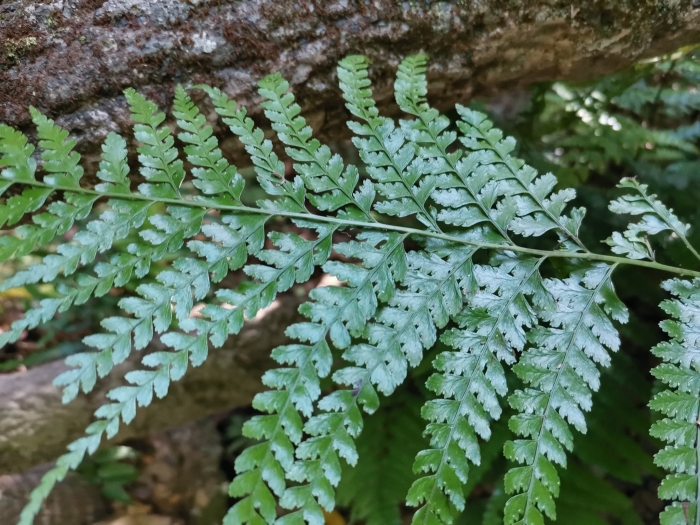Lace Fern
(Microlepia strigosa)
Lace Fern (Microlepia strigosa)
/
/

harum.koh
CC BY-SA 4.0
Image By:
harum.koh
Recorded By:
Copyright:
CC BY-SA 4.0
Copyright Notice:
Photo by: harum.koh | License Type: CC BY-SA 4.0 | License URL: http://creativecommons.org/licenses/by-sa/4.0/ | Rights Holder: harum.koh | Publisher: iNaturalist | Date Created: 2020-07-21T07:03:28-07:00 |


































































Estimated Native Range
Summary
Microlepia strigosa, commonly known as Lace Fern, is a perennial fern that can be evergreen or deciduous depending on the climate. It is native to the understory of humid forests and rainforests in South and Southeast Asia, East Asia, and the Pacific Islands. This species typically reaches a height of 2-3 feet (0.6-0.9 meters) and a width of 3-5 feet (0.9-1.5 meters), featuring delicate, lacy fronds that give it a light and airy appearance. The fronds are bright green, compound, and finely divided, contributing to the plant’s common name.
Lace Fern is valued for its graceful foliage and is often used in shaded garden areas, woodland plantings, and as a filler in tropical landscapes. It thrives in moist, well-drained soils rich in organic matter and prefers partial to full shade. While it requires consistent moisture, it is important to avoid waterlogged conditions. Lace Fern is relatively low-maintenance, but it can be susceptible to pests such as scale insects and mealybugs. In regions with suitable conditions, it can spread through spores and become naturalized, potentially becoming invasive. Gardeners should be cautious about planting it in areas where it could escape cultivation and disrupt local ecosystems.CC BY-SA 4.0
Lace Fern is valued for its graceful foliage and is often used in shaded garden areas, woodland plantings, and as a filler in tropical landscapes. It thrives in moist, well-drained soils rich in organic matter and prefers partial to full shade. While it requires consistent moisture, it is important to avoid waterlogged conditions. Lace Fern is relatively low-maintenance, but it can be susceptible to pests such as scale insects and mealybugs. In regions with suitable conditions, it can spread through spores and become naturalized, potentially becoming invasive. Gardeners should be cautious about planting it in areas where it could escape cultivation and disrupt local ecosystems.CC BY-SA 4.0
Plant Description
- Plant Type: Fern
- Height: 2-3 feet
- Width: 2-3 feet
- Growth Rate: Moderate
- Flower Color: N/A
- Flowering Season: Non-Flowering
- Leaf Retention: Evergreen
Growth Requirements
- Sun: Part Shade, Full Shade
- Water: Medium
- Drainage: Medium
Common Uses
Border Plant, Low Maintenance
Natural Habitat
Understory of humid forests and rainforests in South and Southeast Asia, East Asia, and the Pacific Islands
Other Names
Common Names: Hay-Scented Fern , Rigid Lace Fern , Palapalai , 粗毛鱗蓋蕨 , 돌잔고사리 , 돌토끼고사리
Scientific Names: Microlepia strigosa , Microlepia khasiyana , Microlepia formosana , Microlepia szechuanica , Davallia strigosa , Dicksonia strigosa , Microlepia cristata , Davallia japonica , Davallia khasiyana , Davallia polypodioides var. strigosa
GBIF Accepted Name: Microlepia strigosa (Thunb.) C.Presl